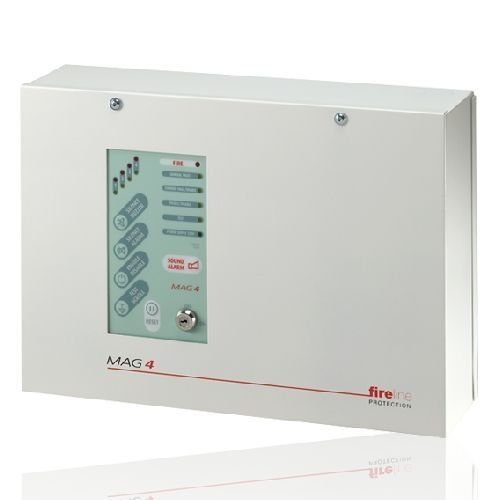MYTE Security Fire Alarms
Fire Alarms
At MYTE Security, we recognize the critical importance of fire safety and early detection in protecting lives and property. Our wide range of fire alarm products is designed to provide reliable fire detection, immediate alerts, and effective emergency response. This web page serves as an in-depth guide to our fire alarm products, highlighting their features, benefits, and applications. Let’s explore the world of fire safety together!
Fire Alarm Control Panels
Our fire alarm control panels serve as the central command center for your fire detection and alarm system. These intelligent panels receive signals from various detectors and devices, analyze the information, and initiate appropriate responses.
**Key Features:**
– Highly sensitive detectors that detect smoke, heat, and other fire-related phenomena.
– Intuitive user interfaces with LCD displays for easy system management.
– Zone or addressable configurations for identifying specific areas of fire events.
– Built-in relays for activating fire suppression systems, notification devices, and emergency protocols.
– Integration with building management systems or security platforms for comprehensive control.
Smoke and Heat Detectors
Our smoke and heat detectors play a critical role in the early detection of fire and the issuance of timely alarms. These devices utilize advanced sensing technologies to monitor the environment for the presence of smoke particles or rapid increases in temperature.
**Key Features:**
– Photoelectric smoke detectors for detecting visible smoke particles.
– Ionization smoke detectors for detecting invisible smoke particles.
– Combination detectors that combine both technologies for enhanced accuracy.
– Fixed or rate-of-rise heat detectors to identify rapid temperature changes.
– Advanced algorithms to reduce false alarms while ensuring reliable fire detection.
– Long-lasting batteries or direct power connections for uninterrupted operation
Fire Alarm Notification Devices
Our fire alarm notification devices are designed to quickly and effectively alert occupants of a fire emergency, facilitating prompt evacuation and ensuring the safety of everyone on the premises.
**Key Features:**
– Audible alarms, including horns, sirens, and bells, for immediate sound-based alerts.
– Visual alarms, such as strobe lights or flashing beacons, for individuals with hearing impairments or in noisy environments.
– Voice evacuation systems for clear, intelligible instructions during an emergency.
– Integration with mass notification systems for broadcasting messages across multiple areas or buildings.
– Wireless or wired connectivity options for flexible installation and coverage.
Contact us below for information on fire alarms
At MYTE Security, we are dedicated to providing top-quality fire alarm products that prioritize life safety and property protection. Our comprehensive range of fire alarm control panels, detectors, notification devices, and sprinkler system integration options ensures a robust fire detection and response system tailored to your specific needs. Contact us today to discuss your fire safety requirements, and let our experts guide you in designing a reliable and effective fire alarm system that meets and exceeds industry standards.
F.A.Q.
Frequent Questions
How do fire alarms work?
Fire alarms work by detecting the presence of smoke, heat, or flames, indicating a potential fire. They consist of sensors that continuously monitor the environment for signs of fire. When the sensors detect smoke or heat above a certain threshold, the fire alarm system triggers audio and visual alarms, alerting occupants of the building to the potential danger.
Are fire alarms required by building regulations?
Yes, fire alarms are typically required by building codes and regulations to ensure the safety of occupants. The specific requirements may vary depending on the type of building, its occupancy classification, and local regulations. Fire alarms are essential in both residential and commercial buildings to provide early warning in the event of a fire, allowing occupants to evacuate and enabling prompt response from firefighters.
What types of fire alarms are available?
There are various types of fire alarms available, including ionization smoke alarms, photoelectric smoke alarms, heat detectors, and combination alarms. Ionization alarms are more sensitive to flaming fires, while photoelectric alarms are better at detecting smoldering fires. Combination alarms incorporate both technologies for comprehensive fire detection. Heat detectors are primarily used in areas where smoke alarms may trigger false alarms, such as kitchens or garages.
How often should fire alarms be tested and maintained?
Fire alarms should be tested regularly to ensure they are functioning properly. It is recommended to test smoke alarms monthly by pressing the test button. Additionally, professional inspection and maintenance should be conducted annually to check the functionality of the entire fire alarm system, including the sensors, control panel, and notification devices. Regular battery replacements or checks for hardwired systems are also crucial to maintain their effectiveness.
Send us a message
Address
Hendy Close
Swansea SA2 8BB
Phone
0800 129 9993
info@mytesecurity.co.uk

